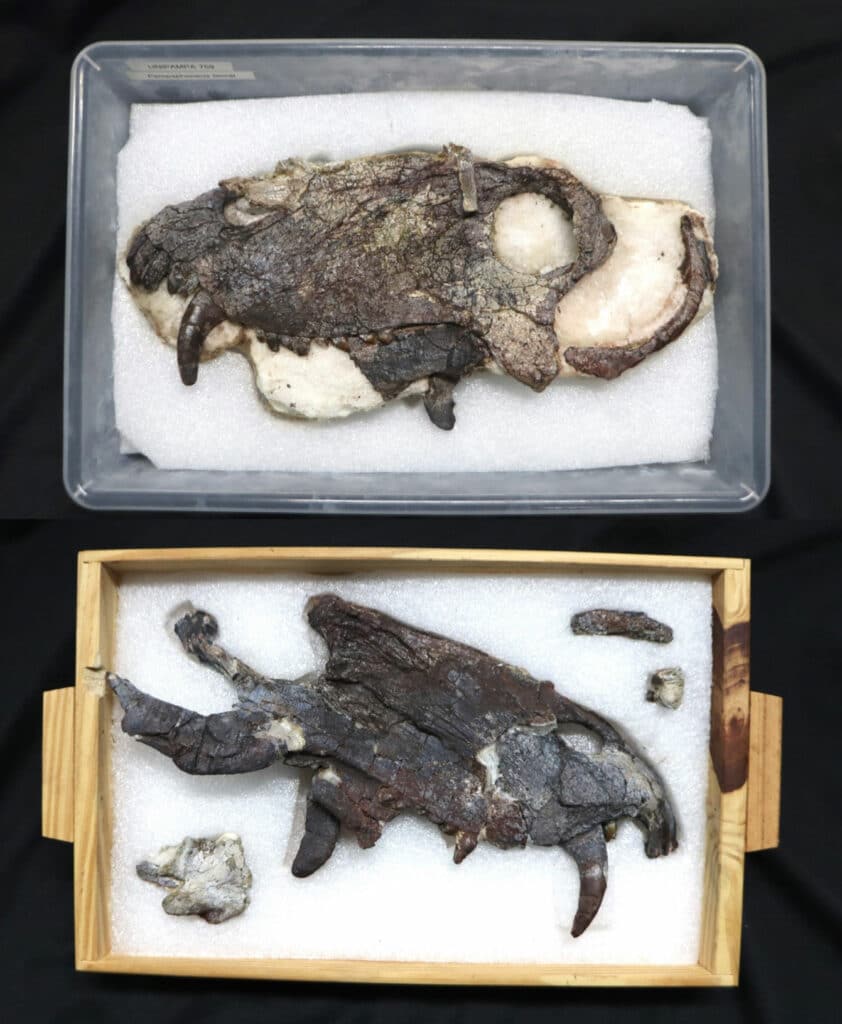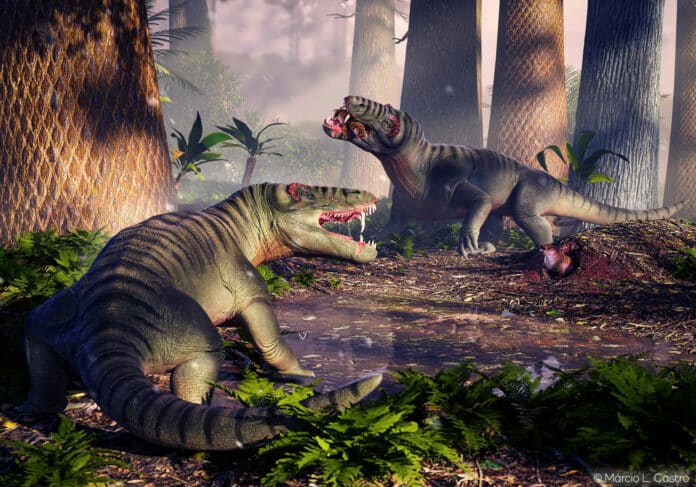An international team of researchers has discovered a 265-million-year-old, exquisitely preserved fossil species of Pampaphoneus biccai in the rural area of São Gabriel, Southern Brazil.
Pampaphoneus biccai, the largest and most ferocious meat eater of its time, ruled South America 40 million years before dinosaurs took over.
Scientists discovered fossils, including a complete skull and some skeletal bones, such as ribs and arm bones. Pampaphoneus, an early therapsid from the group known as dinocephalians, existed just before the greatest extinction event in Earth’s history, which resulted in the eradication of 86% of all animal species worldwide.
The study describes an almost complete Pampaphoneus biccai skull associated with a few postcranial remains recently recovered from the type locality. Its discovery is crucial for understanding the community structure of terrestrial ecosystems right before the largest mass extinction in human history. This is a stunning discovery that highlights the significance of Brazil’s fossil record on a global scale.
The new specimen is only the second Pampaphoneus skull discovered in South America. It is also larger than the first and offers unheard-of insights into its morphology thanks to the extraordinary preservation of its bones.

Lead author Mateus A. Costa Santos, a graduate student in the Paleontology Laboratory at the Federal University of Pampa (UNIPAMPA), said, “The fossil was found in middle Permian rocks, in an area where bones are not so common, but always hold pleasant surprises. After so long, finding a new Pampaphoneus skull was extremely important for increasing our knowledge about the animal, which was previously difficult to differentiate from its Russian relatives.”
The specimen was collected over the course of a month of backbreaking daily fieldwork by paleontologists from UNIPAMPA and Universidade Federal do Rio Grande do Sul (UFRGS). It required an additional three years to clean and study the fossils because of the pandemic adequately.
Professor Stephanie E. Pierce, co-author and curator of vertebrate paleontology and mammalogy in the Museum of Comparative Zoology at Harvard University, and senior author and head of lab Professor Felipe Pinheiro’s current research on the Permo-Triassic fossil record of Brazil included the study of the animal.
Pierce said, “This animal was a gnarly-looking beast, and it must have evoked sheer dread in anything that crossed its path.”
Pinheiro said, “Pampaphoneus played the same ecological role as modern big cats. It was the largest terrestrial predator from the Permian in South America. The animal had large, sharp canine teeth adapted for capturing prey. Its dentition and cranial architecture suggest that its bite was strong enough to chew bones, much like modern-day hyenas.”
Although Pampaphoneus’ skull, at over 40 cm, is the largest full skull ever discovered, the study indicates that a previously unidentified fossil may represent a third individual, who may have been up to two times larger than the latest discovery. Even though the latter is only recognized from a portion of its jaw, it has enough traits to be classified as Pampaphoneus.
The largest Pampaphoneus individuals, according to the research, might weigh up to 400 kilograms and measure about three meters long. It was a cunning predator that could eat small to medium-sized creatures. Some of its probable prey have also been located in the same area as the fossil, including the enormous amphibian Konzhukovia and the tiny dicynodont Rastodon.
The new Pampaphoneus specimen and the other creatures discovered here show the region’s paleontological potential for important fossil discoveries.
Journal Reference:
- Mateus A Costa Santos, Valtaire D Paes Neto, Cesar L Schultz, Juan Cisneros, Stephanie E Pierce and Felipe L Pinheiro. Cranial osteology of the Brazilian dinocephalian Pampaphoneus biccai (Anteosauridae: Syodontinae). Zoological Journal of the Linnean Society. DOI: 10.1093/zoolinnean/zlad071
